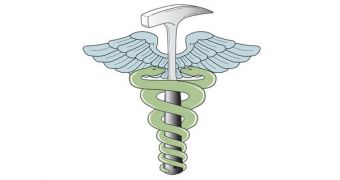Investigators at the Arizona State University (ASU), sponsored by NASA, announce the development of a new method of detecting bone loss in humans early on. This is made possible by a technique that analyzes the properties of calcium isotopes in urine samples.
If experts find a way of applying this technique effectively and cost-efficient, then patients may no longer be exposed to harmful X-rays as they undergo tests, as is currently the case. The new approach has no side-effects, and is completely non-invasive.
The goal of this investigation is to develop a way of figuring out whether a person's bones are getting stronger of weaker in time. More than 50 percent of the general population in the United States is at risk of developing osteoporosis, a condition characterized by the general weakening of the bones.
Women are especially prone to developing this disease, primarily due to hormonal imbalances that occur in their bodies after menopause. If experts can detect bone loss early on, then they could apply therapies that would limit this condition's side-effects.
In the near future, ASU scientists hope to use what they've learned in the new investigation to identify other biosignatures and biomarkers, to be used for diagnosing other medical disorders early on.
“Bone loss also occurs in a number of cancers in their advanced stages. By the time these changes can be detected by X-rays, as a loss of bone density, significant damage has already occurred. Also, X-rays aren’t risk-free. We think there might be a better way,” says Ariel Anbar, the senior author of the study.
The expert holds an appointment as a professor in the Department of Chemistry and Biochemistry, and the School of Earth and Space Exploration, both at ASU. Anbar says that calcium is present in human urine in various configurations, called isotopes.
By analyzing these isotopes, it is possible to figure out whether bones are becoming stronger or weaker at any given time, the investigator adds. Details of the work appear in a paper entitled “Rapidly assessing changes in bone mineral balance using natural stable calcium isotopes.”
The work is published in the May 28 early online issue of the esteemed journal Proceedings of the National Academy of Sciences (PNAS).
“Right now, pain is usually the first indication that cancer is affecting bones. If we could detect it earlier by an analysis of urine or blood in high-risk patients, it could significantly improve their care,” adds Dr. Rafael Fonseca.
He holds an appointment as the chair of the Department of Medicine at the Mayo Clinic in Arizona, and works with the ASU team of collaborative research based on this study; however, he was not a part of the research team.

 14 DAY TRIAL //
14 DAY TRIAL //